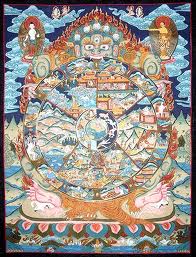
(Read Part 1 of the series.)
Part 2 – Metaphysics
Metaphysics, as the study of the questions of ‘life, the universe and everything’ is known, fell out of vogue in the twentieth century, when the attitude arose that most of what had previously been thought to be intransigent problems were not really problems at all but arose through our inability to formulate the problem correctly. Once we used language properly, it was argued, the difficulties would disappear. Many recent philosophers have not even addressed the sort of fundamental questions that are being asked on this site. In this respect there is a similarity with science. There was a time when an enquiring mind could range over the entire domain of what is now thought of as ‘science’, becoming expert in many areas and making new discoveries. The amount of material that was written down and accepted as proven was minimal. Over the past few centuries, the rate of investigation and discovery has accelerated and it is now possible to conduct novel research in only a tiny area of specialisation. In the 3rd Century BC, Aristotle’s multi-disciplined enquiries have already been noted. By the 20th Century, most of the philosophy in England was devoted to analysing the meanings of sentences! Continue reading

